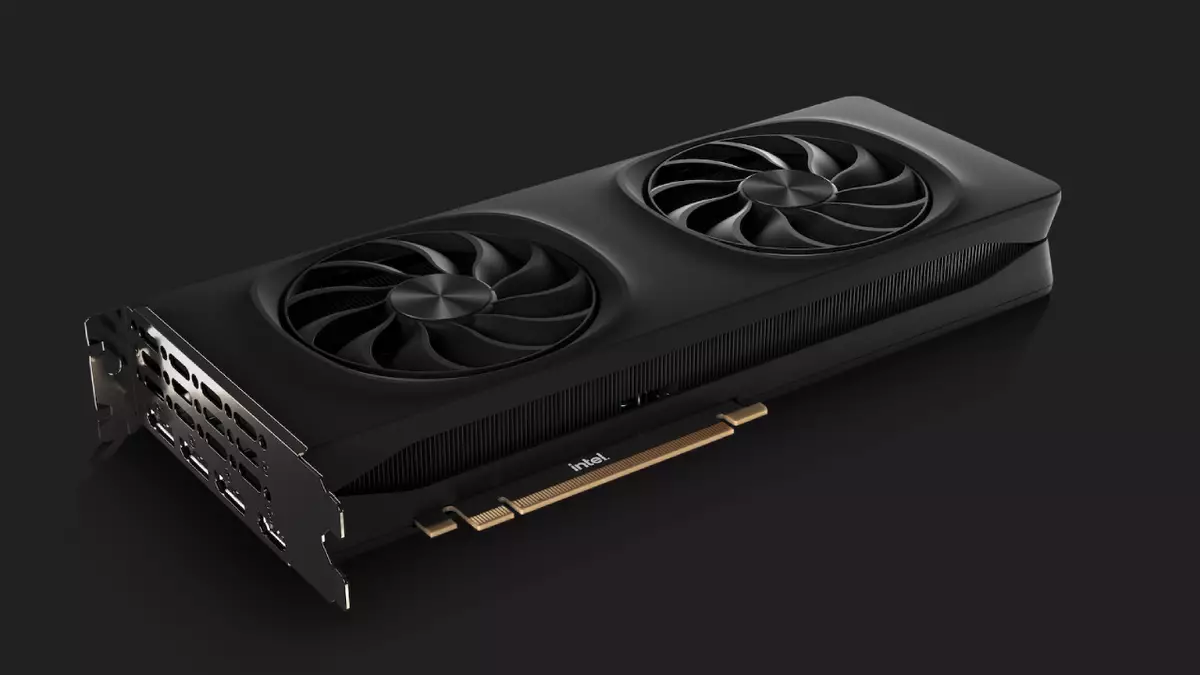Intel has recently made waves in the gaming industry with the introduction of its second-generation gaming graphics processing units (GPUs), branded as Battlemage. The launch revolves around two key products: the Arc B580 and B570 graphics cards. While initial expectations might have aligned with a broader competitive strategy against higher-tier Nvidia GPUs, the Battlemage series is positioned as a direct rival primarily to Nvidia’s low-end RTX 4060, leaving some enthusiasts pondering the ambition behind this initial offering. Nevertheless, the technical advancements and features embedded in these GPUs could signify an important step for Intel in the gaming market.
One of the most noteworthy aspects of the Battlemage GPUs is the introduction of advanced features designed to enhance the gaming experience. A standout function is the upgraded version of Intel’s upscaling technology, XeSS 2, which now incorporates frame generation capabilities. This innovative addition places Intel in a competitive stance with Nvidia’s DLSS technology, enhancing the overall performance and graphical fidelity of games. Interestingly, Intel’s offerings appear to surpass AMD’s current capabilities, particularly since the latter’s graphics cards are absent of AI accelerators akin to Nvidia’s Tensor cores.
The introduction of XMX cores within Intel’s GPUs stands as a testament to the company’s commitment to modern gaming experiences. These AI accelerators facilitate intelligent graphical upscaling, allowing for a more sophisticated approach compared to AMD’s existing hand-coded solutions, which lack similar adaptability. This differentiation could prove pivotal as the industry leans increasingly towards AI-driven technology in gaming.
Delving deeper into the mechanics of XeSS 2, Intel’s frame generation is designed to create additional frames by utilizing data derived from prior game states. Techniques such as optical flow and motion vector reprojection work in tandem to produce interim frames that will supplement fully rendered frames in the graphics pipeline. The implications for gaming performance are considerable, particularly highlighted in notable titles like F1 24, where performance with XeSS 2 was reported to surge impressively from 48 fps to an astonishing 186 fps in its highest performance mode—a striking 3.9 times increase. Even when prioritizing visual fidelity, performance was seen to elevate to 136 fps, or a notable 2.8 times increase.
Such performance claims are indeed ambitious, and it remains to be seen how the Battlemage series will translate these numbers into real-world gameplay experiences. The benchmarks suggest a significant leap forward, one that could alter the competitive landscape among GPU manufacturers if matched or exceeded in practical scenarios.
In parallel to the advancements in upscaling and frame generation, Intel has introduced a feature called XeLL, aimed at minimizing latency—a critical aspect for competitive gamers. By systematically reducing latency from an average of 57 milliseconds to just 32 milliseconds when running under 50 fps, XeLL aligns itself with Nvidia’s Reflex technology, showcasing Intel’s understanding of gamer needs. Furthermore, this feature can prefix the latency typically introduced through frame generation, thereby allowing users to experience lower latency while still enjoying the benefits of enhanced framerate.
The amalgamation of XeSS-SR (Super Resolution) and XeSS-FG (Frame Generation) alongside XeLL provides users with a well-rounded suite of features. Intel’s ambition appears to be centered on serving those who desire high-quality visuals without compromising responsiveness—achieving a delicate balance that some competitors may still be striving towards.
Indeed, the advent of Intel’s Battlemage GPUs signifies a critical evolution in the graphics card market. With strategic features designed to compete directly against established technologies like Nvidia’s DLSS and AMD’s offerings, Intel is proving itself a formidable player. However, it remains to be seen how these capabilities perform under rigorous gaming conditions and whether Intel can sustain momentum in an increasingly competitive landscape. As enthusiasts eagerly anticipate real-world testing scenarios, one thing is clear: Battlemage may be just the beginning for Intel in its quest to redefine gaming graphics.


Leave a Reply